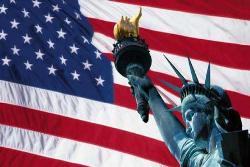 Commerce and Industry Minister Anand Sharma proposed a comprehensive economic cooperation agreement with the US at a business meeting during US President Barrack Obama's visit to India.
Commerce and Industry Minister Anand Sharma proposed a comprehensive economic cooperation agreement with the US at a business meeting during US President Barrack Obama's visit to India.US Commerce Secretary Gary Locke was, however, cautious in his reaction stating that such an agreement would need to be done in stages.
It will be interesting to study the main issues of concern for the two sides if they were to start negotiating a comprehensive trade and investment agreement.
As of now the US has 12 free trade agreements in place and some more are under negotiation or finalisation including an important one with South Korea.
India, on the other hand, already has 16 operational trade agreements and negotiations are on with several important partners like Malaysia, Japan and so on.
Given the number of negotiations that have already been concluded or are going on, India would have FTAs with nearly every major trade partner except the US and China in the coming few years. Interestingly, nearly all of India's agreements are comprehensive agreements.
The change in India's position towards seeking bilateral trade agreements vis-à-vis pursuing only the multilateral trade route has taken place primarily over the last five to seven years.
In 1999, before the second ministerial meeting of the World Trade Organisation, India along with Australia, New Zealand, Hong Kong China, Pakistan, South Korea and Japan was part of a group called "Friends of the Primacy of the Multilateral Trading System" in which it had sought an examination of the 34 regional trade agreements that had been notified to the WTO as being consistent with the related articles of General Agreement on Tariffs and Trade and General Agreement on Trade in Services.
New Delhi has come a long way from that position and in another six to seven years will be eliminating or reducing tariffs on nearly 90 per cent of products with about 80 per cent of India's trade partners.
Given this backdrop, there are several areas on which Washington and New Delhi need to focus. From a US perspective, the important issues would be in the area of intellectual property rights besides other areas such as greater market access in some areas that India may consider sensitive.
From an Indian perspective, the main areas of concern would be market access, which is blocked today due to domestic
regulations especially in the area of services.
There are existing discussion areas such as a totalisation agreement that would also be crucial for the two sides to sign if they were to have a trade agreement.
One area sensitive to both sides is agriculture, for different reasons.
For India, it is a livelihood issue while for the US it is about reducing subsidies on products that provide a vote bank for politicians.
A CEPA is normally viewed as a platform for increasing investment-led trade and in this context there would be many issues for both sides to address.
The US would like greater flexibility in the area of IPRs while India would look for movement in removing non-tariff barriers which hamper market access.
In the area of intellectual property the Americans would be very keen on focusing on the IPR enforcement in the country.
Besides, there are some areas such as compulsory licensing and incremental innovation in which US companies have been raising issues in India's domestic policy for long.
While both sides have put forward their views strongly, little has been done to engage meaningfully on these issues.
In terms of non-tariff barriers in the US the main area of concern would be the domestic regulations that hamper exports, especially in the area of services.
The protectionist tendencies in the US against issues such as outsourcing in the last few years have added to the Indian business' concerns for accessing the US market.
Both countries are keen on increasing their exports and have drawn up strategies to incrementally improve the export performance.
The US president's visit to India has been welcomed as a major movement forward in building a strategic partnership.
A trade agreement would be a natural corollary to any strategic partnership and it may be important for the two sides to list out the exact areas of concern and set up a mechanism to address the issues through a meaningful engagement so that business on both sides benefit.
The author is principal adviser APJ-SLG Law Offices





